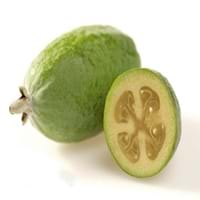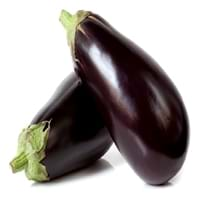Health Benefits
Anti depressant, Cancer prevention, Reduces nervous tension, Treatment of alzheimer's disease, Treatment of Lung disease
Cancer prevention, Heart care, Reduces blood circulation problems
General Benefits
Digestive aid, Helps in weight loss, Improves blood circulation, Strengthens bones, Treatment of common cold
Digestive aid, Fights against infections, Flu treatment, Healing of wounds, Helps in weight loss, Treatment of common cold
Skin Benefits
Brightens and lightens complexion, Skin rejuvenation
Anti-aging benefits, Brightens and lightens complexion, Skin cleansing, Skin rejuvenation
Hair Benefits
Promotes longer and healthier hair, Protects hair
Prevents hair loss, Promotes longer and healthier hair, Protects hair, Rejuvenates scalp
Allergy Symptoms
NA
Abdominal pains, Anaphylaxis, Diarrhea, Dizziness, Hives, Itching in tongue and other parts of mouth, Tingling sensation in mouth, Vomiting
Side Effects
Allergic reaction
Allergic reaction, Irritation, Nausea, Skin rash, Swelling
Best Time to Eat
As a snack in the late afternoon, Don't consume at night and before bed, Eat the fresh ones, avoid mixing with any other foods, don't eat after meal., Morning time (before lunch)
Along with meal, Don't consume at night and before bed
Vitamin B5 (Pantothenic Acid)
Vitamin C (Ascorbic Acid)
Vitamin K (Phyllochinone)
Phytosterol
Not Available
Calories in Fresh Fruit with Peel
Not Available
Calories in Fresh Fruit without Peel
Not Available
Calories in Frozen Form
Not Available
Not Available
Calories in Dried Form
Not Available
Calories in Canned Form
Not Available
Not Available
Calories in Jam
Not Available
Calories in Pie
Not Available
Type
Tree fruit
Fruit vegetable, Tropical
Season
Autumn, Winter
Spring, Summer
Varieties
Anatoki, Gemini, Kaiteri, Kakariki, Pounamu, Unique, Apollo, Den's Choice, Kakapo, Mammoth, Opal Star, Triumph and Wiki Tu
Black Magic, Black Beauty, Black Bell, Sicilian, Italian, Indian (Baby), Japanese, Chinese and White
Color
Green
Black, Green, Pink, Purple, Purplish black
Taste
Sweet
Bitter, Slightly sweet, Spongy
Origin
Argentina, Brazil, Paraguay, Uruguay
India
Grows on
Not Available
Bushes
Soil Type
Clay loam, Gravely loam, Sandy
Sandy loam
Climatic Conditions
Cold, Warm
Warm to hot climate
Facts about
- Feijoa is called as "pineapple guava" in some countries.
- Feijoa tree is an ornamental plant that can also be used as hedge & windbreak.
- All parts of feijoa fruit are edible(skin is mostly discarded).
- In Italy, it's a belief that diet rich in eggplant leads to madness. Hence, they call it a 'crazy apple'.
- Eggplant contains nicotine & can help quit smoking.
- Juice made from its leaves and roots is medicinal.
Top Producer
New Zealand
China
Other Countries
Australia, Azerbaijan, India, Japan, United States of America
Egypt, India, Indonesia, Iran, Iraq, Italy, Japan, Spain, Turkey
Top Importer
China
United States of America
Top Exporter
New Zealand
China
Botanical Name
Acca sellowiana
Solanum melongena
Synonym
Feijoa sellowiana or Orthostemon sellowianus
Solanum ovigerum or Solanum trongum
Subkingdom
Tracheobionta
Tracheobionta
Division
Magnoliophyta
Magnoliophyta
Class
Magnoliopsida
Magnoliopsida
Subclass
Rosidae
Asteridae
Family
Myrtaceae
Solanaceae
Species
A. sellowiana
S. melongena
Generic Group
Myrtle
Not Available
Difference Between Feijoa and Eggplant
We might think that Feijoa and Eggplant are similar with respect to nutritional value and health benefits. But the nutrient content of both fruits is different. Feijoa and Eggplant Facts such as their taste, shape, color, and size are also distinct. The difference between Feijoa and Eggplant is explained here.
The amount of calories in 100 gm of fresh Feijoa and Eggplant with peel is Not Available and 25.00 kcal and the amount of calories without peel is 55.00 kcal and Not Available respectively. Thus, Feijoa and Eggplant belong to Low Calorie Fruits and Low Calorie Fruits category.These fruits might or might not differ with respect to their scientific classification. The order of Feijoa and Eggplant is Myrtales and Solanales respectively. Feijoa belongs to Myrtaceae family and Eggplant belongs to Solanaceae family. Feijoa belongs to Acca genus of A. sellowiana species and Eggplant belongs to Solanum genus of S. melongena species. Beings plants, both fruits belong to Plantae Kingdom.









